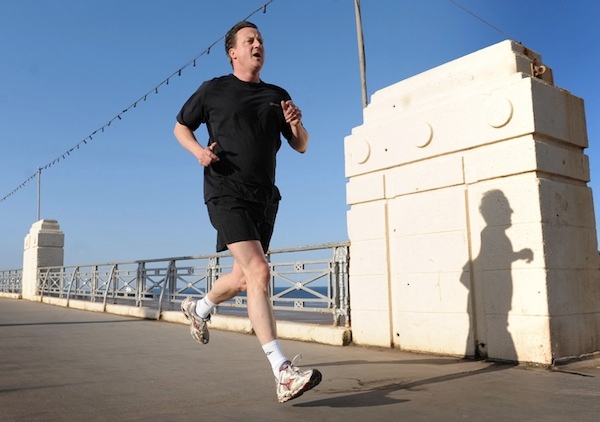The Prime Minister today criticised schools for filling their compulsory two hours of weekly sport with ‘sort of Indian dancing classes’. He said: ‘Now, I’ve got nothing against Indian dancing classes but that’s not really sport.’
Now, dancing isn’t really sport, is it? It’s dance. But it gets the heart rate going like the clappers, improves core strength, balance, and co-ordination. Dancing was good enough for the Great British swimmers, who took up ballet before the Olympics to improve their technique. Just up the road from Downing Street are the Pineapple Dance Studios, founded by a former model who lost three stone from dancing. David Cameron would do well to visit them and watch the sweat dripping down the studio walls in the midst of a fast-paced jazz class.
The Prime Minister is focusing just on the sort of sports teaching that encourages the best sports people to excel, but leaves those who can’t catch a ball, who are a bit rubbish at swimming, and who find netball baffling out in the cold. It depends whether he wants school sports teaching that encourages sports for all, or just for the few.
He has also drawn a false distinction between PE lessons that teach a love of physical activity to all students, and a right-on sports regime that says everyone needs to be a winner. Of course it’s silly to hold sports days where there are no winners: if nothing else, children aren’t as stupid as the organisers of those ‘non-competitive’ events liked to think. They’re perfectly capable of working out who in the playground is a good runner, and who is a bit slow, just as they know that the ‘eagle’ group in their maths lesson who are already doing long division are better at maths than the ‘sparrows’ who are still plodding through the six times table. But teaching more than just competitive team sports opens up a whole world of physical activity to children. The Prime Minister himself is a keen runner for the sake of running and the health benefits it brings rather than so he can smash world records for the 10k.
I saw this first hand when I was at school. I was spectacularly, amusingly bad at the sports that my school taught. I was one of those children who wave their arms ineffectually when a ball comes zooming towards them, and the only time you’d see me running was away from the action on the field or court. But fortunately our PE department realised that not all of us were going to join our classmates in playing lacrosse for England, or joining the best netball team in the country. Our sports lessons included yoga, dance (not ‘sort of Indian dancing classes’, but still fun) and aerobics, as well as other, less popular team sports like volleyball and basketball. They pushed the stars to become winners, but the less sporty still got a look in.
School sports partnerships excelled at this, too, introducing children to physical activity that might suit them better, and that they might continue into later life. As I blogged earlier in the week, obesity costs this country a darn sight more than we’ve invested in Olympic sports. It seems a little odd for a blog post on Coffee House to say competition doesn’t solve everything, but when it comes to getting young people active, there is more to life than just competitive sports.
The Prime Minister is struggling to articulate what he actually wants the Olympic legacy to be. Does he just want more investment in sports for sportsmen? Or does he also want Britain to be so inspired by the healthy glow of athletes like Jessica Ennis and Sir Chris Hoy that they take physical activity seriously? My guess would be both, but currently the most visible legacy the Prime Minister has created is the enormous hole he has dug for himself on school sports. He didn’t even need to: the only fight Britons were really looking for during the Olympics took place in the boxing ring, not the Westminster village.







Comments